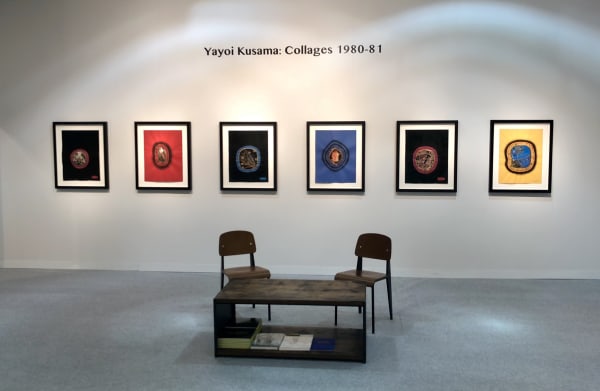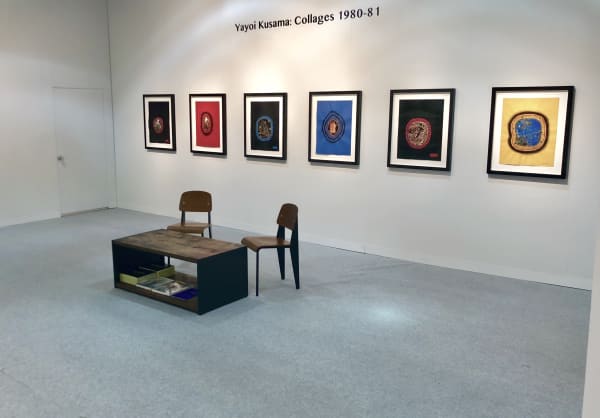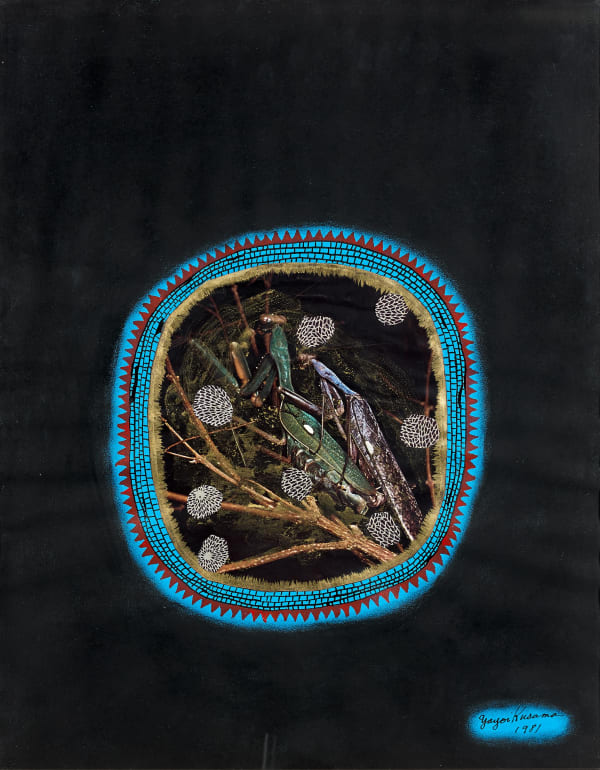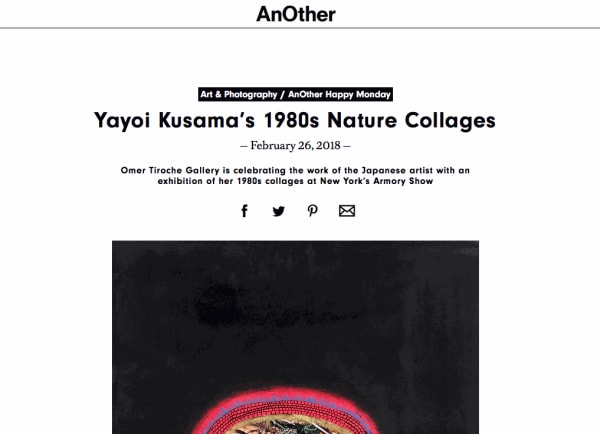Yayoi Kusama: Collages 1980-1981: New York
Insights Booth 308, Pier 92
711 12th Avenue at 55th Street
New York City
As an artist celebrated for her exuberant use of colour and provocative exhibitionism, Yayoi Kusama’s more subtle collage work is far lesser known. Created after her return to Japan, these lyrical works illustrate a significant but short-lived chapter in the artist’s life, incorporating subtle traces of her ubiquitous polka-dots and Infinity Net motifs that were prevalent in her work during the 1950s and 60s.
Before he died, the artist Joseph Cornell had given Kusama a box filled with his own collage materials. Carrying them back to Japan – as she had once carried her own works on paper to New York – she began assembling an intimate tribute to her dearest friend. Reminiscent of her early works on paper, these pieces hold darker, mysterious creatures; they are scattered with underwater bubbles and latticed with delicate cross-hatching. Eerie, animalic objects float on the surface of small enclosed spaces, like things found in rock pools, or cells observed through a microscope.
In stark contrast to her wild New York happenings and controversial phallic sculptures, this period seems sobering, a sombre reflection on grief. Like holding up a negative to the light, the collages act as a memento mori, providing a time capsule for their relationship. They attempt to examine the transient nature of life and recognise the inevitability of death.
Kusama has described herself as an Alice-in-Wonderland type figure, part of a world that madly shrinks into a peep show, or amplifies itself to cabaret proportions. Each phase of her creativity over the past few decades has reflected her projected persona in some way, inextricably linked to her physical appearance and psyche. There have been representations of all-encompassing apparitions on paper, live performances of polka-dot mirages on bare skin, the fear and fascination of macaroni and sex transformed into unwearable clothes and uncomfortable furniture. These wraith-like collages may appear at odds with the rest of her body of work, yet they remain portholes into another important period of the artist’s life.
Yayoi Kusama first met Joseph Cornell in 1962 through an art dealer. Desperate to buy from Cornell one of his famously exclusive boxes, the dealer had invited Kusama to the meeting, confident that the older artist would be charmed by the young Japanese beauty. In her silver kimono, Kusama had such an impact on the reclusive Cornell that he became infatuated, immediately attempting to pin her down like another one of his butterfly or bird clippings that he had collected. He began bombarding her with endless letters and poetry, showering her with compliments, constantly calling her on the phone.
Cornell was as allergic to public attention as Kusama thrived on it, and keeping himself to himself he composed surreal microcosms of imaginary adventures. Resembling well-travelled suitcases or journals, the boxes were furnished with old ticket stubs, clippings from foreign newspapers, celestial maps, used stamps, pictures of caged birds. He would mail these like love letters to the latest actress or ballet dancer that he was taken with, although he was regularly rejected by most women he desired. An intensely private man, he rarely allowed these tokens of his affection to be sold despite high demand – however he quickly became one of Kusama’s most useful benefactors, giving her several of his boxes to sell in order to support herself.
Sharing a tendency towards obsessive compulsion, the two enjoyed mutual admiration for each other’s artistic genius. Although she had created a scandalous reputation for herself, Kusama’s deep phobia of sex stemmed from her childhood when her mother would often force her to spy on her father’s womanising escapade with geishas. This fear was complemented by Cornell’s impotence, and they naturally fell into a kind of passionate platonicism, like two strange birds. They spent days at Cornell’s house in Queens, sketching each other naked – much to the annoyance of Cornell’s mother who also lived there and thoroughly disapproved of the unlikely pairing.
The marked extremes between the artists only fuelled their attraction to each other – Kusama’s methodical monsters spilling larger-than-life from their frames in hot pursuit of eternity, Cornell’s fragile shadow boxes safely holding his locked-up ghosts. Even physically, the two embodied their work, observing the stares that they attracted when seen out in public together. Occasionally mistaken for a homeless man, Cornell dressed himself like a tramp and worked in a studio that resembled a life-size cabinet of curiosities. Scattered amongst stacks of magazine clippings, his hoarded treasures were described by Kusama as ‘disorderly mess’. Although their aesthetics were polar opposite, the couple shared the same overwhelming sense of isolation and loneliness, as well as a preoccupation with imprisonment and escape.
Frustrated by the presence of Cornell’s mother – who hated her son’s girlfriend so much that she once threw a bucket of water over them as they kissed – and the claustrophobia of Cornell’s unrelenting attention, Kusama turned back to her own career. Although she gradually withdrew herself from the relationship, they remained in contact during his last years, throughout the deaths of his beloved brother and mother, and his declining physical condition. Once in a while she would relent and visit, but Cornell’s sudden heart failure occurred whilst Kusama was far away on business in Tokyo.
The news of Cornell’s death hit Kusama hard, and she returned to Japan the following year in 1973 in rapidly deteriorating health. Back amongst those that mocked her ‘Queen of Scandal’ title and didn’t consider her a serious artist, the hallucinations worsened and she spiralled into a severe depression. Her father died shortly afterwards and, despite psychiatric treatment, Kusama found the anxiety unbearable. She admitted herself to a Psychiatric hospital as a permanent resident in 1977.
Entering into the intensity of her loss, Kusama slowly began to create new works by using the collage materials that Cornell had left her. Veiling his carefully selected cut-outs of birds, insects and reptiles with her signature patterned plumes, Kusama pieced together a moving tribute to her lover and re-established her artistic reputation in Japan, exhibiting early versions of these works in 1975 at her first solo show since leaving New York.
Joseph Cornell had wanted to make a final ‘Yayoi’ box before the end of his life, and was hoping for her to send photographs that he could use. Regretfully, Kusama writes that she ‘failed to do it in time, and Joseph was still waiting for them when he died.’ The series of collages to which she devoted herself re-enters that dialogue, honouring his work with the ultimate recognition from one artist to another, planting herself, in her own way, permanently within his created world.
The collages are poetic and quietly introverted, hinting at unreachable realms behind a dark glass. Particularly poignant are the images of robins and eagles that recall Cornell’s well- loved Aviary collages and Bird Boxes. Illustrating the tension felt by both artists, they explore mutual longings for unbounded freedom, and an awareness of the world’s limitations. The pieces are a mnemonic taxonomy of pinned butterflies and pressed flowers, as delicate and disturbed as the contents of Cornell’s tormented mind.
-
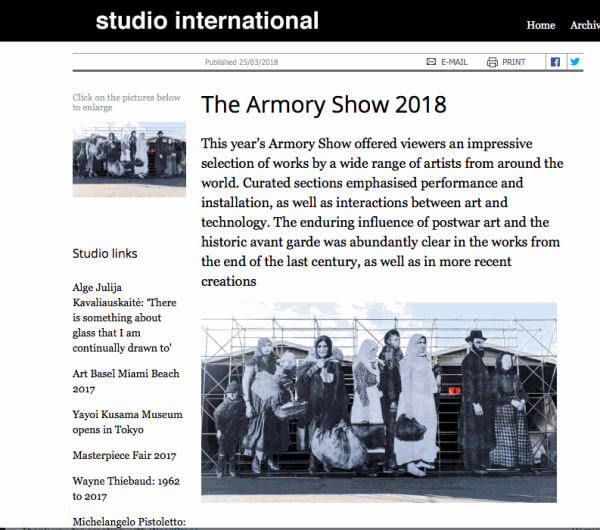
studio international: The Armory Show 2018
Studio International, March 25, 2018 -
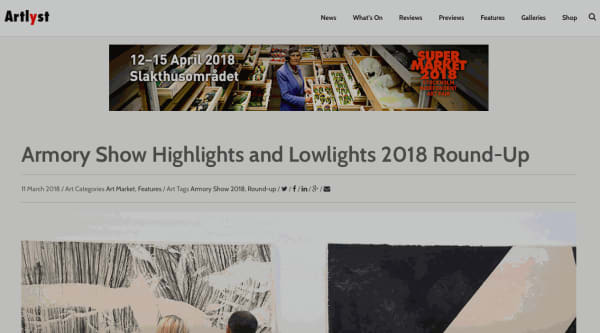
Artlyst: Armory Show Highlights and Lowlights 2018 Round-Up
Artlyst, March 11, 2018 -
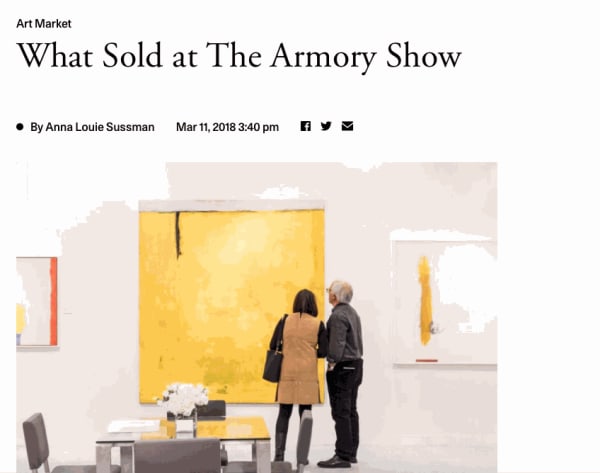
Artsy: What Sold at The Armory ShowArtsy: What Sold at The Armory Show
Artsy, March 11, 2018 -
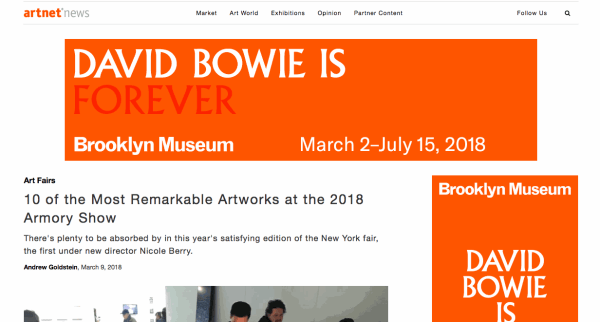
Artnet News: 10 of the Most Remarkable Artworks at the 2018 Armory Show
Artnet News, March 9, 2018
-
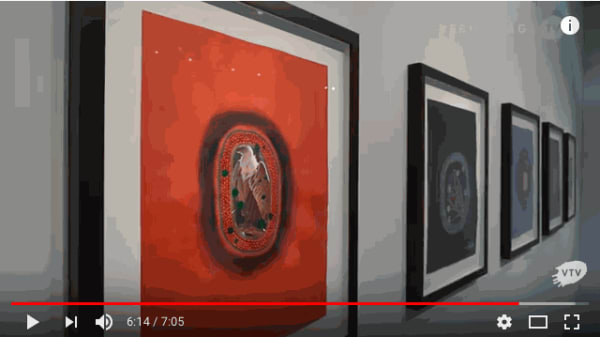
VernissageTV: The Armory Show 2018
VernissageTV, March 9, 2018 -
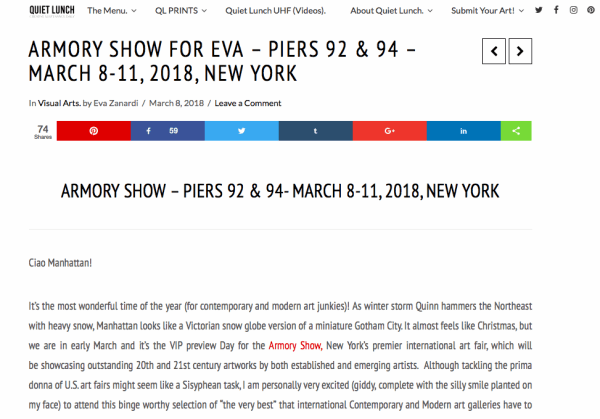
Quiet Lunch: Armory Show for Eva
Quiet Lunch, March 8, 2018 -
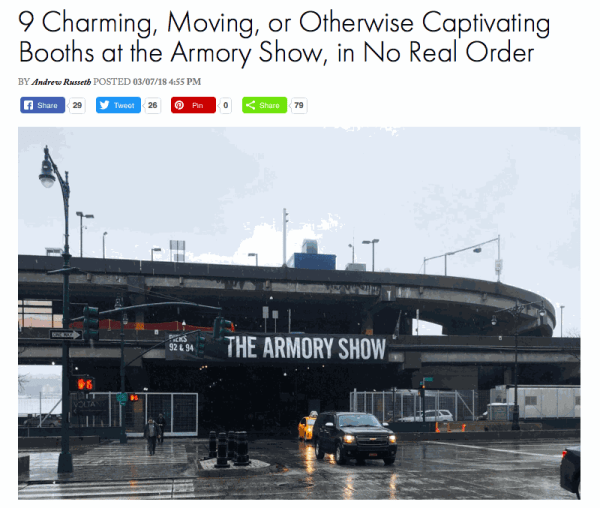
ART NEWS: 9 Charming, Moving, or Otherwise Captivating Booths at the Armory Show, in No Real Order
ARTNEWS , March 7, 2018 -
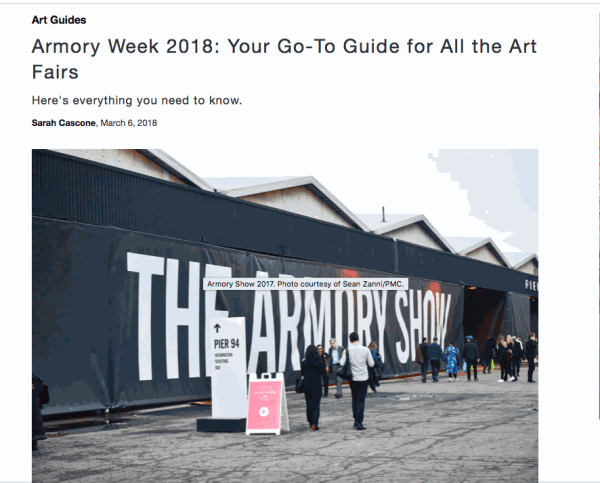
Artnet Art Guides: Art Guides Armory Week 2018: Your Go-To Guide for All the Art Fairs
Artnet Art Guides, March 6, 2018

